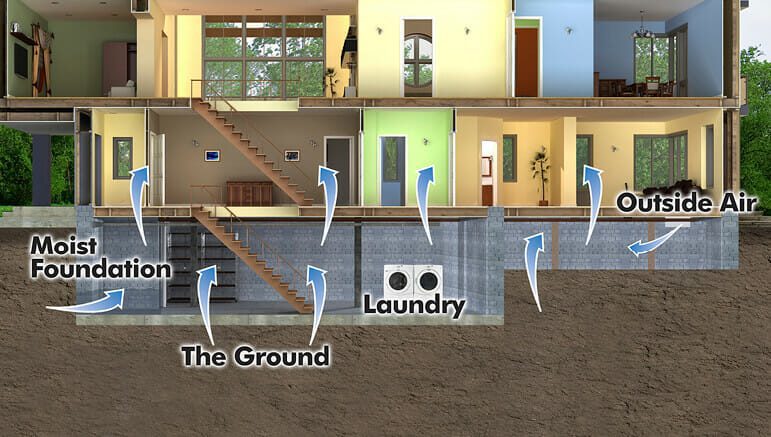Reduce Health Risks with Santa Fe Dehumidifiers
Can Dehumidifiers Improve Your Health?
The health and well-being of your family is paramount and the role that moisture plays in IAQ can have a major impact. According to the Environmental Protection Agency, health problems associated with poor indoor air quality include eye irritation, allergies, headaches, and respiratory ailments, such as asthma.
These problems can be directly related to the presence of mold, high volatile organic compound (VOC) levels, and dust mite infestations in the home. The most recognized and effective solutions to address these health issues include moisture control and ventilation. Santa Fe Whole House Ventilating Dehumidifiers greatly reduce the risks of these serious health issues through superior filtration, fresh air ventilation, and dedicated dehumidification.
How Does High Humidity in Your Home Negatively Impact Your Health?
Too much moisture in the air of your home provides the perfect environment for the growth of mold and dust mites. These organisms trigger asthma attacks and contribute to allergies, headaches, and respiratory problems.
What Causes Asthma + Allergies
The most common indoor and outdoor allergy triggers include pollen, mold spores, dust mite and cockroach allergens, and animal / rodent dander. Allergies are a common health hazard connected with elevated levels of indoor humidity as well. The immune system in our body reacts with allergens around us and develops undesirable symptoms. Dust mites, mold, and mildew are among the most common allergens that cause allergies.
Dust Mites
Exposure to house dust containing mite allergens typically causes sneezing, nasal stuffiness, runny nose, and itchy / watery eyes, but can also trigger asthma attacks.
House dust allergies are particularly important to control because the symptoms are year round rather than seasonal like pollen allergies. Research has shown that reducing mite allergen levels in the home can lead to an improvement in allergic symptoms and a reduction in medication requirements.
Mold
Mold is a fungus that feeds on organic substances and survives in moist conditions. Besides causing allergies, they emit harmful chemicals such as volatile organic compounds (VOC) and mycotoxins.
ACCORDING TO THE AMERICAN LUNG ASSOCIATION, NEARLY 75% OF AMERICANS LIVE WITH SOMEONE WHO HAS ALLERGIES, ASTHMA, EMPHYSEMA, OR ANOTHER RESPIRATORY ILLNESS.
ACCORDING TO THE ENVIRONMENTAL PROTECTION AGENCY, INDOOR RELATIVE HUMIDITY SHOULD BE KEPT BELOW 60% – IDEALLY 30% TO 50% – TO PREVENT THE GROWTH OF MOLD.
ACCORDING TO THE ASTHMA AND ALLERGY FOUNDATION OF AMERICA, ALLERGIES ARE THE MOST FREQUENTLY REPORTED CHRONIC CONDITION IN CHILDREN, LIMITING ACTIVITIES FOR MORE THAN 40%.
According to Partnerships for Advancing Technology in Housing, filtration and dehumidification of fresh air to the home may reduce the frequency of allergies and respiratory ailments.
The American Academy of Allergy, Asthma & Immunology recommends keeping humidity levels below 50% in the home with a dehumidifier to reduce dust mites.
LACK OF VENTILATION IN THE HOME CAN CONTRIBUTE TO HIGH VOC LEVELS AND POOR INDOOR AIR QUALITY.
DUST MITES LIVE PRIMARILY IN CARPETS, FABRIC UPHOLSTERY, AND MATTRESSES IN THE HOME. DUE TO THEIR INABILITY TO DRINK WATER, THEY THRIVE IN MOIST ENVIRONMENTS WHERE THEY CAN ABSORB HUMIDITY, TYPICALLY BETWEEN 59°F – 95°F AND ABOVE 55% RELATIVE HUMIDITY.
High humidity in the home can lead to mold and dust mites.
IAQ & YOU
Interested in learning more about the science behind indoor air quality? Visit the FAQ page for a detailed explanation of how temperature, dew point, and relative humidity all impact the comfort of your home. Also, see how dehumidification and ventilation work together to promote a healthy environment for you and your family.





